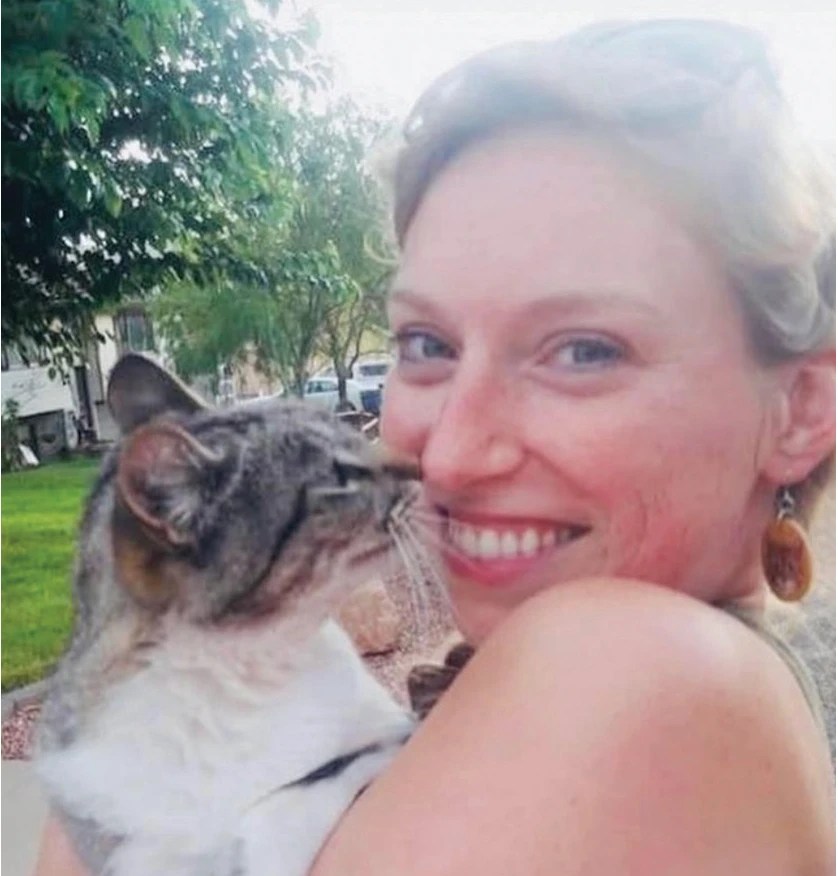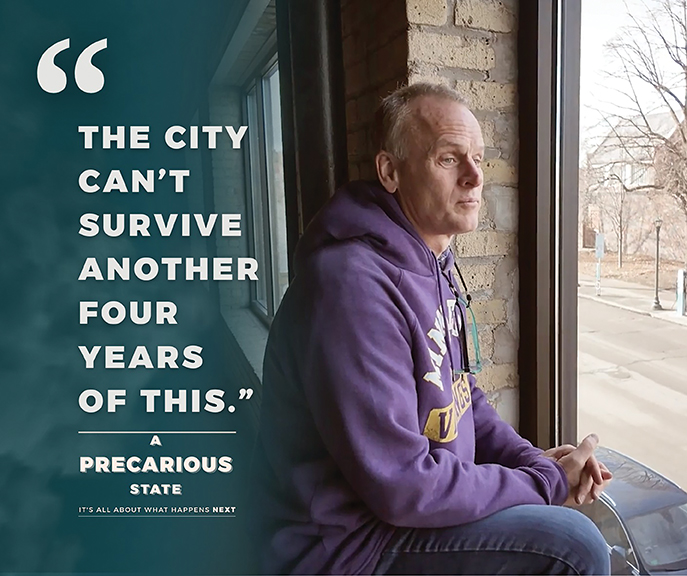Craig Wilson interviews Katie Winkelman via email about her passion for animals and rescuing strays.
Where did you grow up?
I grew up in Morris, Minnesota and Sartell, Minnesota and went to college at Gustavus Adolphus College in St. Peter, Minnesota.
What do you do for a living?
I run my own dog-walking and -sitting business, specifically for animals with behavioral issues. (I currently have such a strong caseload that I am not taking on new clients–sorry.)
How did you become passionate about animals?
Both of my parents are veterinarians and I think that’s why it started. In particular, my mom has taught me a lot about caring for non-human animals and compassion in general.
What are common behavioral issues you see in dogs and cats?
There is such a wide range, although most issues are based in fear–they may not trust any new people outside their current trusted family, so very gradual and careful introductions while trying to create positive associations are a must. (And, FYI, ‘introduction’ may not involve any touching as that may be what they want least.) If they are not too stressed to eat, I use lots of treats in hopes to win some trust, always at a safe distance.
How can humans be better companions to their pets?
Learn species-specific body language from credible sources. It’s important to learn – and respect – the subtle signs of stress and fear and not put animals in situations that make them worried as that may make them even more afraid. For example, it’s best to protect dogs and cats from loud noises like fireworks. And many dogs, even though we would like them to go along, don’t do well in crowded social situations.
We met when I posted a picture of stray kittens on my back deck on Nextdoor. You came to the rescue and have diligently been placing live traps around my house and laying out food to catch them for weeks. Why is it important to fix cats and get them off the streets?
There are various reasons why it’s best to spay/neuter your companion animal. Some include a decreased risk (or elimination) of certain types of cancers, increased longevity, curbing unwanted behavioral issues, potentially saving of future veterinary costs, etc. And of course, a major motivator is population control and to decrease their suffering in many ways, especially via euthanasia in shelters and animal impound facilities. Cats reproduce 45 times as prolifically as humans. That’s a lot of homeless cats, many of whom are euthanized due to spatial reasons. The world does not need more domestic cats reproducing.
For female cats, this means that they won’t go into heat, get pregnant, or have to nurse and care for kittens over and over and over again—which takes a lot of energy and can impact a cat’s overall health.
For male cats, it means they won’t have to fight other male cats for the chance to mate, continually look for females in heat, or constantly defending their territory.
So, whether the cat is an unowned, feral cat, also called a community cat, or an owned cat, spaying and neutering improves their lives.
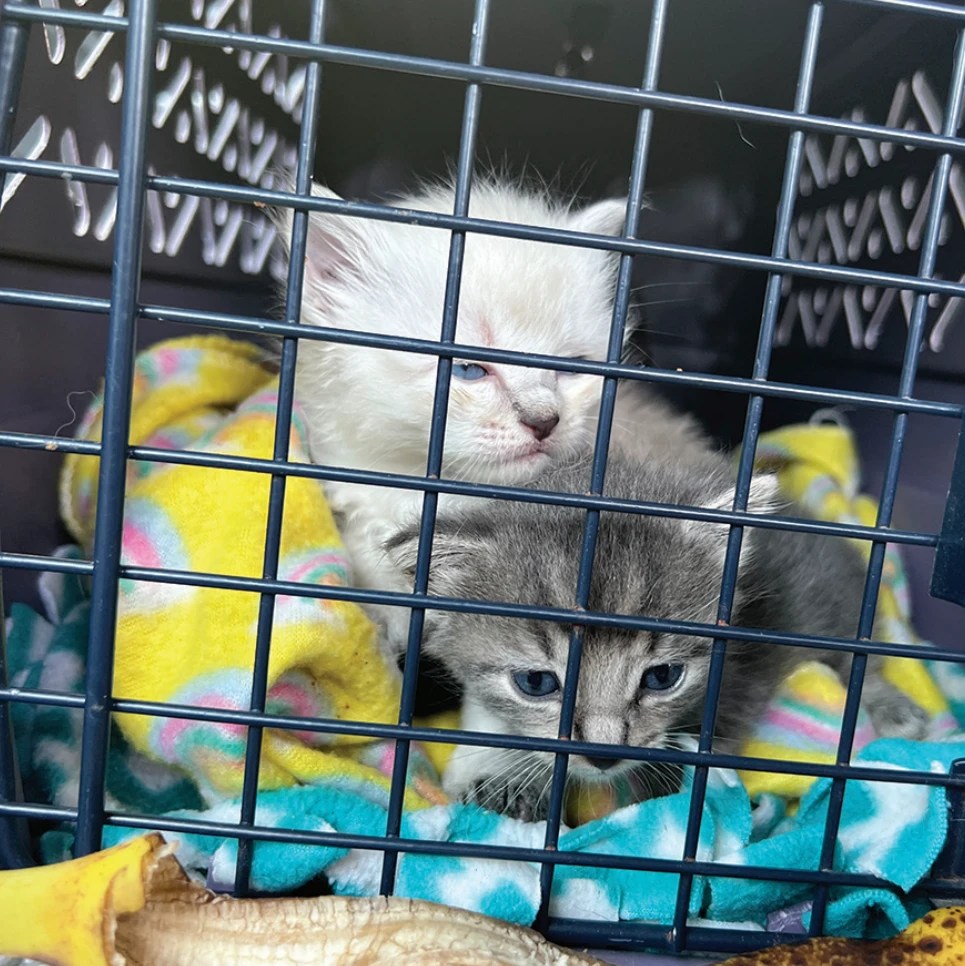
Spaying and neutering aren’t just good for individual cats, they also improves the communities where those animals live. When cats are spayed and neutered, it means fewer cats and kittens end up in animal shelters, where it’s very likely they would be killed. It also frees up shelter resources that can be used to help more animals needing permanent homes.
That’s where what I do comes in. I do what’s called TNR (Trap Neuter Release/ Return). And I consider it vital in all communities. While studies show most owned cats are spayed or neutered, that’s not the case for unowned or community cats.
The purpose of TNR is to ensure these cats who live outdoors are also spayed or neutered. Through TNR, community cats are humanely trapped, spayed or neutered, vaccinated, ear-tipped, and then returned to their outdoor home. (Ear-tipping is the removal of the tip of one of their ears, while they are already under anesthesia for their spay or neuter and indicates that a feral cat has already been spayed or neutered so there is no need to live-trap them again).
Ideally, domestic animals wouldn’t have to live outside, “on the streets,” but there are cats who have either never had any contact with people or their contact with people has diminished over time. They are not socialized to people and survive on their own outdoors in family groups called colonies. Many community cats are not likely to ever enjoy living indoors as they are too terrified to be in close proximity to humans. After being trapped in a live-trap and taken to a veterinarian for spaying/neutering and vaccinations, these cats often do best to continue living outside. Providing shelter (critical in a Minnesota winter), food, and water all year round is important for these cats. Providing these things makes releasing them back outdoors in our climate humane.
TNR makes a huge positive impact in communities by stabilizing cat populations and helping cats and people coexist.
I’m not part of a program or volunteering with a particular organization; I’m just doing this on my own. To have other members of the public educating themselves on the benefits of TNR and how to take TNR into their own hands, in their own neighborhoods would be amazing. I get overwhelmed with the number of uncared for cats and it’s very reassuring to hear when other people also share in the effort to help animals.
What’s a typical day like for you?
Between dog walking and caring for many other animals throughout the day, I am often trying to keep tabs on community cats and setting live-traps for them. If one is caught, I hurriedly search for openings for spay/neuter appointments through AHS Veterinary Centers or MNSNAP. Appointments are always required for surgical procedures and there are days where I cannot find an opening to get a cat in for surgery. This can make things very complicated because it isn’t humane to keep cats in live-traps for extended periods of time as it’s very scary to them and they don’t have access to a litter box, food, or water. It is not smart to re-release the cat before seeing a veterinarian as the cat may be wary of a trap next time and it’s likely I would never be able to catch them again for an appointment. In these cases, I have to frantically find a temporary foster home and get the feral cat or kitten into a large dog crate or room with all the basic necessities until the morning of the procedure. With the animals I have in my own home, I am not able to take more in. I feel like trying to find foster homes for cats is like trying to find a magical unicorn. Actual rescues are also always desperately looking for more foster homes, so reaching out to rescue groups and being willing to foster animals, this could be for a matter of days or months, is incredibly helpful in preventing animals from being euthanized in shelters.
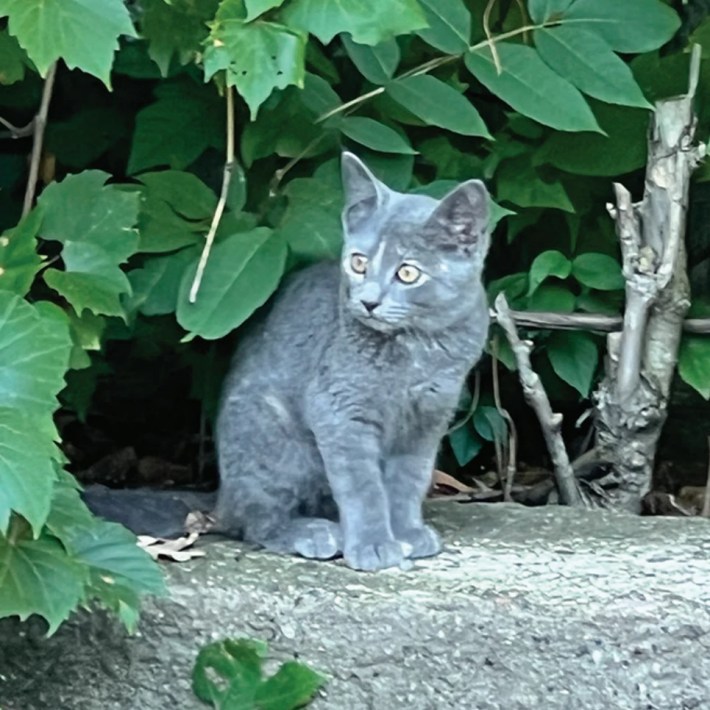
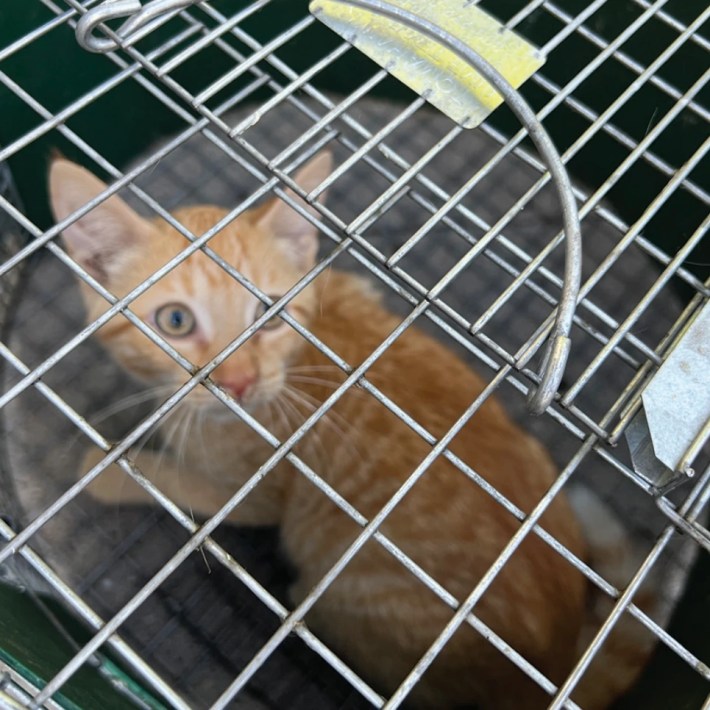
Another difficult thing about not being able to get feral cats into spay/neuter appointments right away is having to transfer them from trap to carrier or large dog crate and back to trap again for their appointment. Just last week, this was the case when I trapped some very feral kittens in the Kenwood/Lowry Hill area. I wasn’t expecting to catch any when I set the traps right away on that particular day, so was unprepared with appropriate gloves and a secure place to transfer the first kitten. The kitten started to get loose again trying desperately to flee, although I knew if he escaped, he would likely not be found again. In my persistence to keep hold of the little guy, I sustained several puncture wounds and scratches to my hands. Knowing that cat bites can result in serious infection, once the kitten was secured in a carrier, I went to urgent care to address my wounds.
The first days to two-to-three weeks of life are critical for early gentle handling for kittens to accept social interaction with humans. Without the benefit of such handling, kittens are truly wild, usually resulting in a fight or flight response that can lead to defensive aggression in attempts to escape. Their first response is to flee, but in the process of capture, they may react aggressively, essentially fighting for their lives as a physiologic response. Just two days after this happened, other neighbors found two-to-three-week-old kittens crying under a house in the afternoon. Their rescue ended up taking the rest of my day and more. Cats mate in warm weather so this kind of thing is never ending for me in the warmer months, also known in the rescue world as “Kitten Season”.
You do all of this as a volunteer yet your time and all the of food, vet bills, etc. must add up. Is there a way that people can help to support your efforts?
The recent bites to me are not the norm, although I felt compelled to persist to avoid another feral left to the ‘wild.’ It is true that TNR takes up a significant amount of my concentration and time. This work also gets quite expensive, incurring personal expense with limited funds. Donations are always welcome to assist in my efforts. Venmo: @KatieWinkelman-7
Any parting advice for people who find strays?
Alley Cat Allies is a nationally-known organization with incredible resources regarding cat welfare. I encourage everyone to learn from their website. (Alleycat.org) You can do anything from simply educating yourself on the issues to learning how to directly involve yourself in helping community cats.
